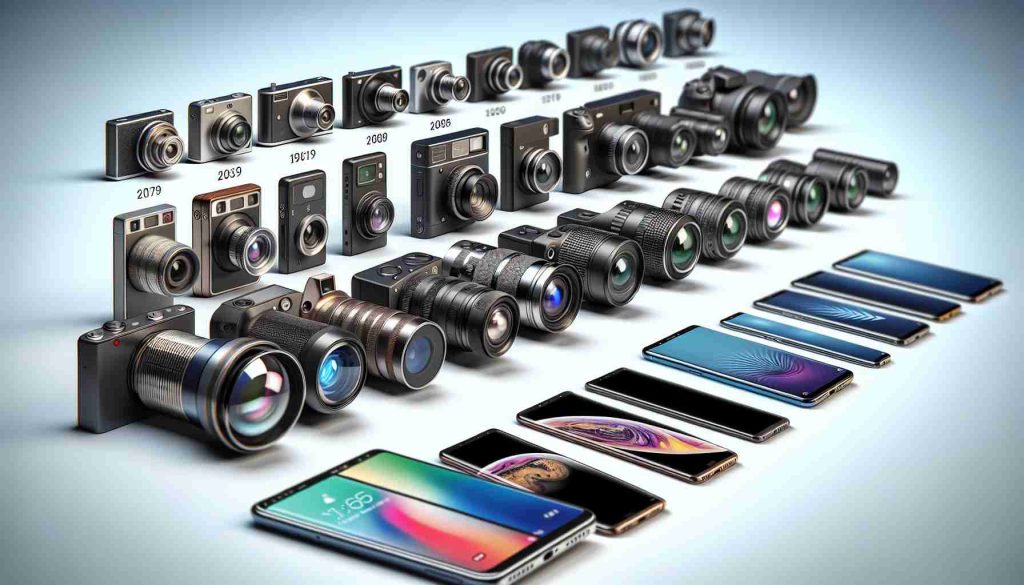The Evolution of Smartphones: A Look at Innovative Photography Technologies

Samsung’s latest smartphones have once again set a new standard in the industry with their cutting-edge camera features driven by artificial intelligence (AI). The integration of AI technology not only enhances the quality of photos but also empowers users to capture professional-level shots effortlessly.
Introducing a range of devices catering to diverse needs, Samsung showcases models like the powerful “Galaxy Z Fold6” and “Galaxy S24 Ultra” that incorporate AI camera technologies to revolutionize the smartphone market.
Reimagining Boundaries with Foldable Smartphones
The “Galaxy Z Fold6” and “Galaxy Z Flip6” from Samsung lead the way in the smartphone market, utilizing AI camera technologies to open new doors for users. These models offer unique experiences based on their distinct designs while sharing a common enhancement in photography capabilities facilitated by AI.
The “Galaxy Z Fold6” boasts a 7.6-inch main display and a 6.3-inch sub-display, enabling compact storage when folded. Equipped with a triple lens setup of 50MP, 12MP, and 10MP, coupled with AI scene recognition and automatic correction features, users can capture stunning photos in any environment efficiently.
Meanwhile, the “Galaxy Z Flip6” features a 6.7-inch main display and a 3.4-inch cover display, emphasizing a pocket-friendly size. With a dual-lens AI camera setup of 50MP and 12MP, the device ensures precise and professional-grade photography aided by AI’s automatic subject-specific settings.
These foldable smartphones redefine user experiences beyond conventional boundaries through the power of AI photography technologies.
Empowering Users with High Performance at Affordable Prices
The “Galaxy S24 FE” inherits Samsung’s flagship technology while excelling in cost-efficient performance, making it an attractive choice for users seeking high performance at reasonable prices. Featuring a triple camera setup of 50MP, 12MP, and 8MP, the device leverages AI to analyze shot scenes and optimize settings seamlessly. Enhanced AI functions like Night Mode and Portrait Mode ensure clear and vibrant photos even in low-light conditions, catering to users without specialized photographic skills.
With the Samsung Exynos 2400 processor and a 4700mAh high-capacity battery, the “Galaxy S24 FE” guarantees robust performance for everyday use, allowing smooth multitasking with multiple apps simultaneously.
Balancing price and performance effectively, the “Galaxy S24 FE” stands out as an excellent choice for users keen on acquiring the latest technology at affordable rates.
Setting New Standards with Zoom Capabilities and AI Integration
The “Galaxy S24 Ultra” from Samsung stands out among flagship models for its exceptional camera features, further enhanced by AI technology. Noteworthy for its 200MP main camera and 50MP telephoto lens in a quad-camera system, the device excels in photography capabilities surpassing other smartphones.
With a 100x zoom feature, the “Galaxy S24 Ultra” captures distant subjects with clarity. AI-driven automatic stabilization and focus adjustments ensure sharp and detailed photos, from landscapes to portraits, across various scenarios.
Real-time scene analysis by AI enables instant optimal settings, allowing users to capture the best shots effortlessly without the need for manual adjustments. Additionally, the enhanced Night Mode ensures bright and clear photos in low-light environments.
Revolutionizing photography standards through its zoom capabilities and AI integration, the “Galaxy S24 Ultra” reshapes the norms of smartphone photography.
Exploring the Allure of AI Camera Technologies
In today’s smartphone market, the significance of AI cameras continues to rise as showcased in Samsung’s latest models. The AI cameras in Samsung smartphones outperform traditional photography techniques, transforming user photography experiences significantly.
A standout feature of AI cameras is their ability to analyze scenes automatically and adjust settings accordingly during shooting. Whether capturing landscapes, portraits, or low-light scenarios, AI swiftly fine-tunes exposure, white balance, and sharpness, enabling users to effortlessly capture beautiful photos. Features like image stabilization and subject-tracking AI further enhance users’ ability to capture clear and crisp photos of moving subjects.
Moreover, the portrait mode, where AI analyzes facial expressions and skin tone for natural corrections, is particularly appealing to selfie enthusiasts. AI doesn’t just assist but evolves the photography process itself.
AI cameras enhance the joy and professionalism of photography, becoming an essential element in smartphone selection criteria.
Advancing Smartphone Photography Beyond AI: The Rise of Computational Photography
While AI technology has indeed revolutionized smartphone photography capabilities, an emerging trend that complements these advancements is computational photography. Unlike traditional photography methods, computational photography involves using algorithms and computational processing to enhance image quality, depth perception, and overall visual appeal.
One key question that arises is: How does computational photography differ from AI-driven photography technologies? Computational photography goes beyond AI’s scene recognition and automatic adjustments by actively processing multiple images to create a final composite with improved dynamic range, sharpness, and clarity. This approach allows for more nuanced adjustments and optimizations that traditional AI algorithms might overlook.
Another important aspect to consider is the scalability of computational photography technologies. As smartphone manufacturers aim to push the boundaries of photography, integrating more advanced computational techniques can strain processing capabilities and potentially impact performance and battery life. Balancing innovative features with practical usability remains a challenge in this evolving landscape.
Despite these challenges, the advantages of computational photography are significant. By harnessing the power of algorithms, smartphones can deliver stunning images with enhanced details, vibrant colors, and reduced noise levels. Features like multi-frame processing, computational bokeh effects, and night mode enhancements showcase the potential of computational photography to elevate smartphone photography to new heights.
On the flip side, the reliance on computational processing can sometimes lead to over-processed images that may lack the authenticity and natural feel of traditional photography. Striking a balance between technical enhancements and artistic integrity becomes a critical consideration for manufacturers implementing computational photography features.
Overall, the fusion of AI-driven photography technologies and computational photography holds promise for future smartphone innovations, offering users a diverse range of creative tools and capabilities to explore and elevate their photography experiences.
Further Reading on Smartphone Photography Innovations:
– Samsung Official Website
– Apple Official Website
– Android Official Website







